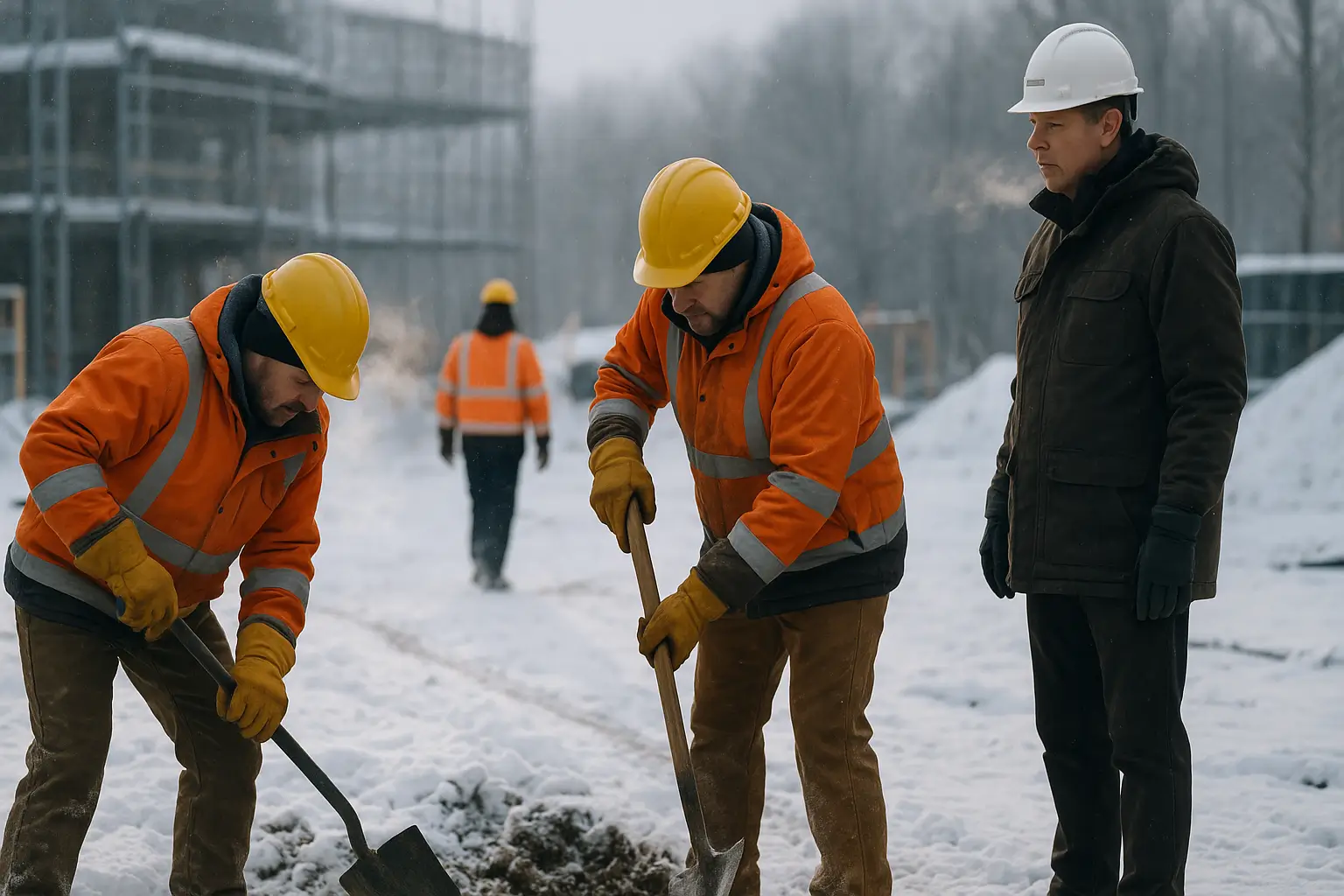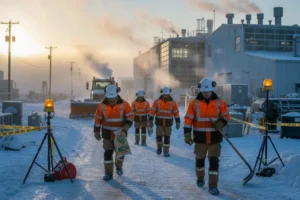Each year, thousands of U.S. workers suffer from cold-related illnesses and injuries, with the Bureau of Labor Statistics reporting numerous cases of frostbite and hypothermia in outdoor occupations.
For employees in construction, delivery, agriculture, and utilities, winter brings unique hazards that can quickly turn dangerous if not addressed.
Cold stress not only affects health but also reduces productivity and increases the risk of accidents.
This guide explains the causes and symptoms of frostbite and hypothermia, prevention strategies, and the responsibilities employers hold in keeping their workforce safe during harsh winter conditions.
Understanding Cold Stress
Cold stress occurs when the body loses heat faster than it can produce it, forcing the body to work harder to maintain its core temperature.
This imbalance puts strain on the circulatory system and vital organs, increasing the risk of serious health issues.
Prolonged exposure to cold, especially when combined with wind, rain, or physical exhaustion, can lead to conditions such as frostbite and hypothermia.
These illnesses develop gradually but can become life-threatening if workers are not properly protected or if early warning signs are ignored.
What is Frostbite?
Frostbite occurs when skin and underlying tissues freeze due to extreme cold exposure.
It often affects extremities like fingers, toes, ears, and the nose, where blood circulation is more limited.
Early warning signs include numbness, tingling, or a “pins and needles” sensation, along with skin that turns pale, white, or grayish.
If exposure continues, blisters may form, and tissue damage can become permanent. In severe cases, frostbite may lead to infection, long-term sensitivity to cold, or even amputation, making early detection and response critical.
What is Hypothermia?
Hypothermia sets in when the body’s core temperature drops below 95°F (35°C), impairing the body’s ability to function normally.
Unlike frostbite, which affects specific areas, hypothermia impacts the whole body and can be life-threatening.
Early signs include shivering, fatigue, dizziness, and confusion; symptoms that are often overlooked in busy work settings.
As it worsens, workers may show slurred speech, poor coordination, slowed breathing, and, in severe cases, loss of consciousness.
According to the CDC, around 1,300 hypothermia-related deaths occur each year in the U.S., many of which could be prevented with timely intervention and protection.
Common Risk Factors for Workers
Not all workers face the same level of danger during winter. Certain conditions and job environments make frostbite and hypothermia far more likely.
Here are the most common risk factors employees should stay mindful of:
Outdoor industries:
Workers in construction, agriculture, utilities, and transportation spend extended hours outside, making them the most vulnerable to cold stress.
Wet clothing:
Rain, snow, or sweat-soaked clothing reduces insulation, causing body heat to escape rapidly. It’s important to stay dry.
Wind chill:
Even moderate cold feels much harsher in windy conditions, which accelerates heat loss from exposed skin.
Poor nutrition and hydration:
Without enough calories and fluids, the body struggles to maintain energy and regulate temperature.
Fatigue and inadequate breaks:
Tired workers or those without regular warm-up breaks are less able to recognize or respond to early warning signs of cold stress.
Most Effective Prevention Strategies To Follow
Cold stress is a serious occupational hazard, especially in industries where employees spend long hours outdoors.
According to the CDC, an average of 1,300 people die from hypothermia each year in the U.S., while OSHA reports that thousands of workers suffer non-fatal cold-related illnesses annually.
These incidents are largely preventable with the right protective measures in place. By combining appropriate clothing, safe work practices, worker education, and proper nutrition, employers can significantly reduce the risks of frostbite and hypothermia during the winter season.
Proper Clothing & PPE:
Dressing in layers, with insulated gloves, waterproof boots, and face coverings, helps trap heat and shield the body from wind and moisture.
Choosing moisture-wicking fabrics is especially important to prevent sweat from cooling the skin.
Work Practices:
Adjusting schedules to warmer daylight hours, rotating workers between tasks, and ensuring access to heated shelters allow employees to recover and reduce prolonged cold exposure.
Training & Awareness:
Teaching workers to spot early symptoms of frostbite and hypothermia ensures a quick response and can prevent minor cases from becoming life-threatening.
Nutrition & Hydration:
Providing warm fluids and calorie-rich meals gives the body the energy it needs to stay warm, while hydration helps maintain circulation and overall body function.
Employer Responsibilities To Protect Workers
Employers play a key role in protecting workers from cold stress. Under OSHA’s General Duty Clause, they must provide safe working conditions, which include addressing cold-weather hazards.
This involves supplying appropriate PPE like insulated gloves and boots, ensuring access to warm shelters, and setting clear emergency response procedures for frostbite and hypothermia.
Proactive measures can significantly reduce the risks faced by outdoor workers during winter.
Must Follow First Aid Measures
Quick and correct action is vital when dealing with cold stress incidents. For frostbite, workers should be moved to a warm area, wet clothing removed, and affected areas warmed gently, without rubbing, as it may cause tissue damage.
For hypothermia, emergency services should be contacted immediately. Focus on warming the body’s core first, using blankets or warm liquids if the person is conscious. These steps can make the difference between recovery and severe injury.
Conclusion
Winter brings unique challenges for outdoor workers, with cold stress, frostbite, and hypothermia posing serious threats to health and safety.
By understanding the risks, recognizing early warning signs, and implementing preventive measures, both workers and employers can minimize danger during harsh conditions.
Proper clothing, safe work practices, training, and quick first aid response are essential layers of protection. Ultimately, a proactive approach ensures not only adherence with OSHA standards but also the well-being and productivity of the workforce throughout the cold season.





